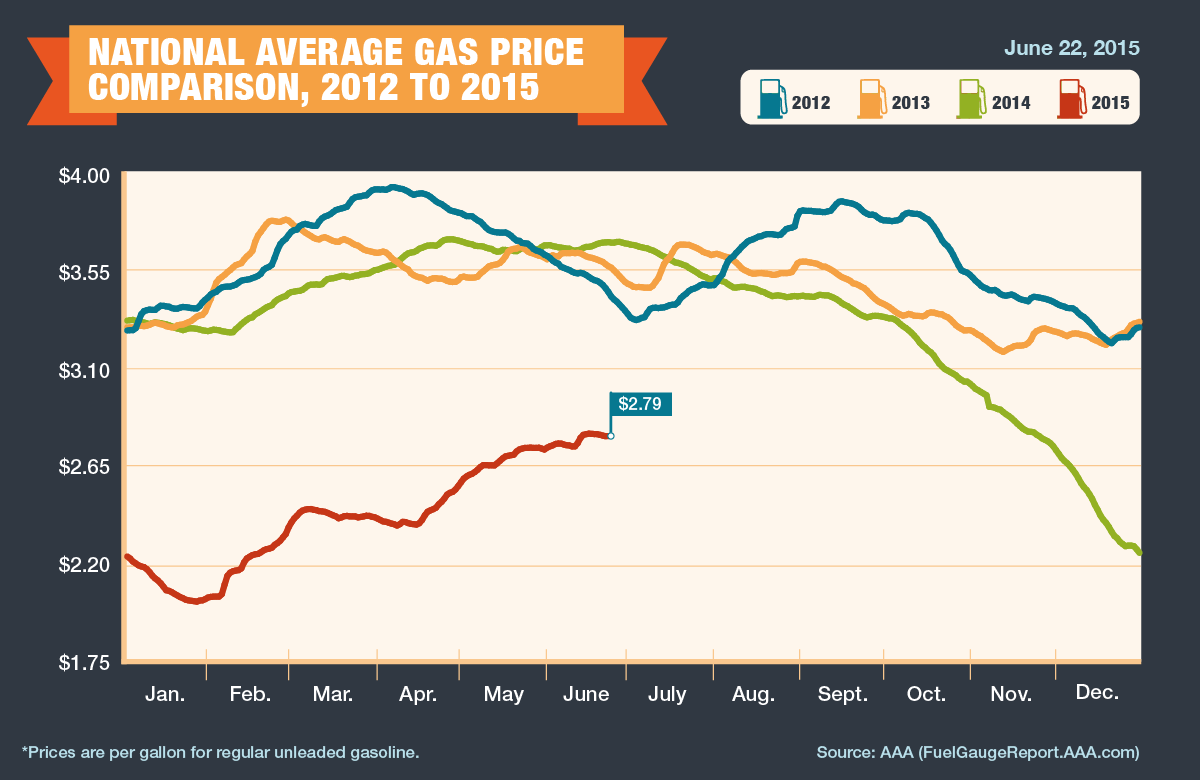Independence Day gas prices will be the lowest in five years
Loading...
Travel for the July 4 weekend will be the busiest it has been in eight years, and drivers will see the lowest gas prices for the holiday weekend in at least five years. But gas prices continue to stray away from their usual patterns, baffling Americans for better and for worse.
AAA said Thursday nearly 42 million Americans are expected to travel 50 miles or more for Independence Day weekend, which AAA defines as July 1 to July 5. This year’s numbers are up 0.7 percent from last year’s numbers, in addition to be the highest level of travelers since 2007.
The 35.5 million travelers who will hit the roads next week will still see low gas prices. The national average for a gallon of gas is $2.78, 88 cents less than the average price on Independence Day last year.
While consumers are seeing relief at the pump compared to previous years, prices at the pump have been the highest all year. During Memorial Day weekend, the national average was $2.74 per gallon. That was 91 cents cheaper than last year – and the cheapest Memorial Day weekend gas in five years – but it was about 70 cents higher than January prices, The Christian Science Monitor previously reported.
This year’s gas prices are also deviating from recent trends. In the past three years, gas prices have declined in June and July, hovering above that year’s lowest prices to that point. Then, gas would incrementally increase in the fall, before dropping off again at the year’s end.
Why are gas prices going against the grain in 2015, and where will they go next? As AAA's public relations manager Michael Green told the Monitor in May, experts are uncertain what prices will do this summer. The US has increased oil production overall and many refineries are resuming normal production, AAA says. But, there are still some roadblocks. California, a state that relies on a lot of regional production, has had problems with refineries, including the February explosion at a Exxon Mobil refinery. As a result, California’s gas prices are the highest in the US at $3.46 per gallon.
Crude oil prices have also gone up. A barrel of oil currently costs $60.68; back in January, the monthly average of oil was about $44. But there could be some relief in store: the Organization of the Petroleum Exporting Countries (OPEC) also reported production levels are at their highest since October 2012, according to the International Energy Agency. Increased global and domestic oil production could reduce prices, but only if demand decreases as well.
Although Americans will feel the effects of higher gas prices on their budgets, there is some good news. More and more Americans are seeing their wages go up, which has helped consumer spending rise. And in the last 25 years of the Consumer Expenditure Survey, gas represents only about 5 percent of total household spending, according to the Brookings Institution. AAA also said rising income and lower-than-average gas prices have fueled both Americans' disposable incomes and the number of people traveling for Independence Day.









